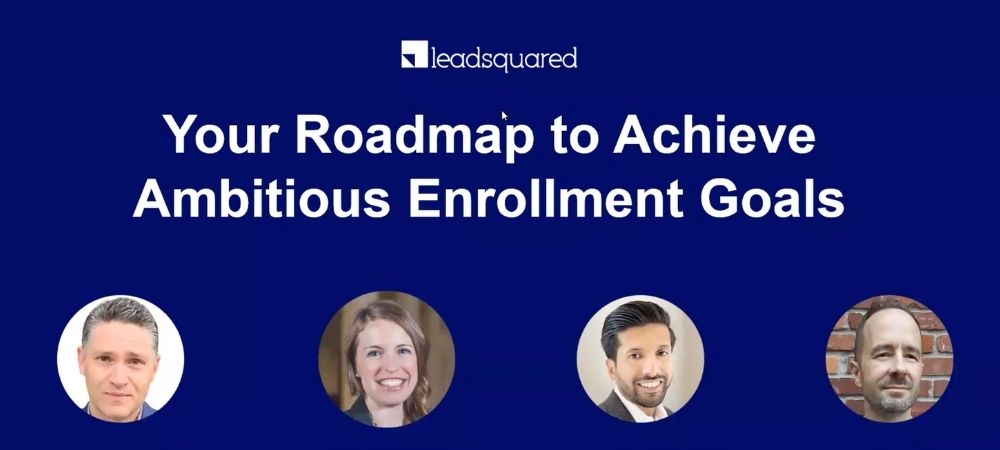Want to explore ways to achieve your enrollment goals in these trying times?
That was our goal when we sponsored an Inside Higher Ed webinar and brought together four experts from the world of higher education.
- Jason Pfaff, vice president, Red Ventures
- Joe Sallustio, senior VP, Lindenwood University (and host of the EdUp podcast)
- Claire Foster, executive VP enrollment services, Regent University
- Karan Raturi, general manager, upGrad North America
It was a lively discussion featuring many great insights. You can watch the webinar in its entirety here, or above, or keep reading to gather many of the highlights.
A reality check came first
As you might expect, Jason and his panel of guests began by recognizing the slump that stares higher education in the face in this decade.
Claire: According to the National Student Clearinghouse, enrollment in the US declined an average of 2.7% in Fall 2021 compared to Fall 2020. So essentially, if you were able to maintain the same enrollment or grow your enrollment this past Fall, congratulations! You are doing better than most colleges in the US.
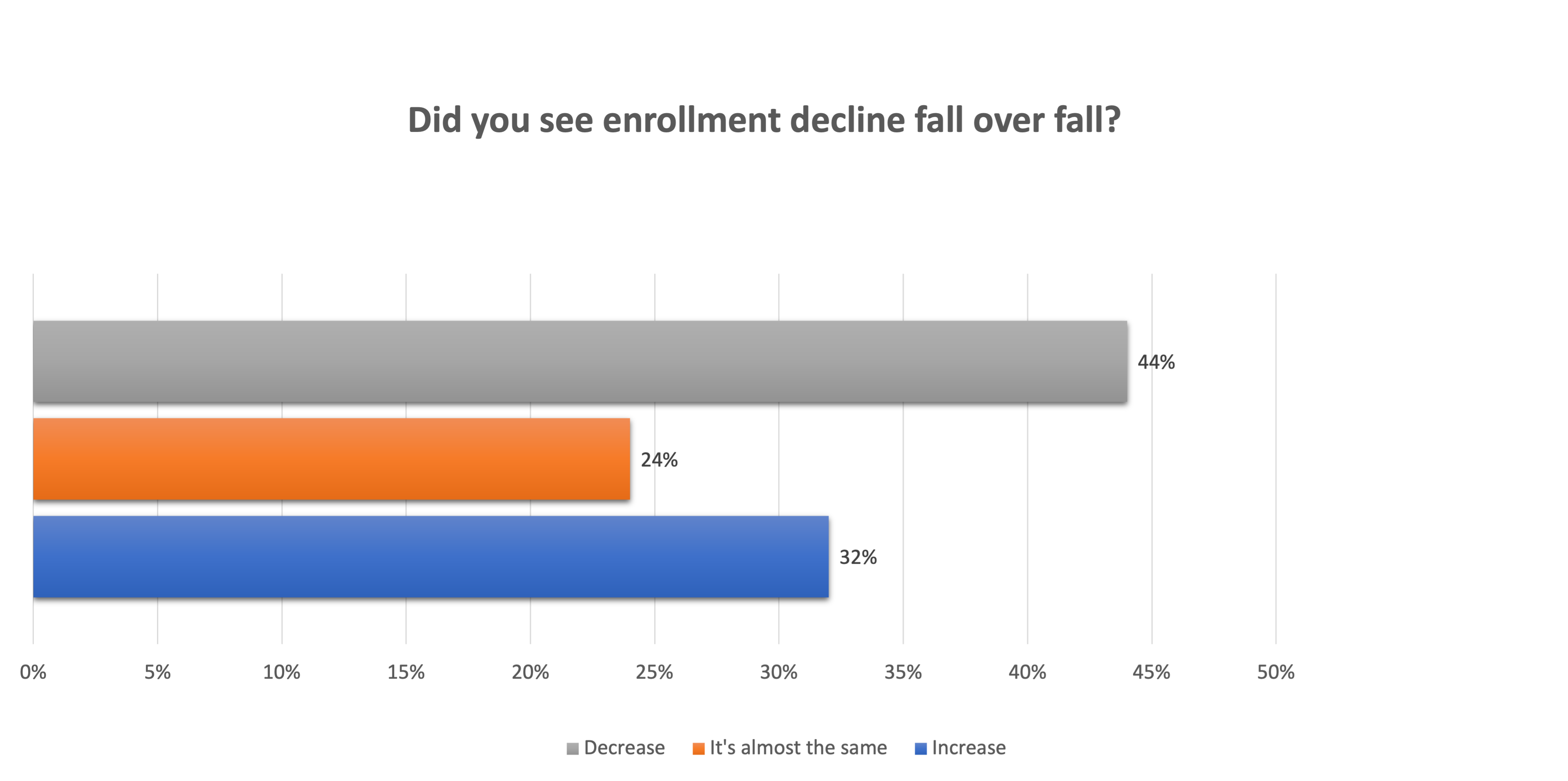
Since 2019, higher ed institutions have lost over a billion students, so we are all facing some significant market headwinds. And to add to that, we know that high school graduates will be declining by 10% from 2025-2037 due to declines in the birthrate.
There are going to be 10% fewer traditional undergraduate students in the market by 2037. That makes it so critical to maximize your resources, unify every facet of your admissions process, and create a proactive system to contact your leads in real-time.
And we’re off…
Systems integration is essential for informed decision-making
Joe: We are talking about integrating systems and I would say if you walked into a room to your admissions manager and said, “What is our cost per lead enrollment, our average cost per enrollment, and our average cost per start?,” I wonder if anybody would be able to answer.
It changes day-to-day, week-to-week, minute-by-minute. But if you can ask about acquisition costs and any jaw hits the floor, that means the team is not trained the way they need to be in today’s higher education environment.
At Lindenwood, we are both traditional and digital. It is totally different between the 4-year traditional student and adult student recruitment. Once you know what your cost is, you can build more effective systems. But you are not going to know your acquisition cost if you don’t have integrated systems.
Karan: To add to that, the accuracy with which you’re importing that data. You can kind of take the same data sets and interpret it multiple ways, and the ultimate is cost per start.
If we narrow our vision a bit, each person in the value chain can be “mis-incentivized” if it is just a lead cost that’s dropping, if it is just one part of the acquisition infrastructure that we are analyzing. It is more and more important over time that we look at the entire marketing journey from the exploratory phases all the way through to enrollment and then accurately quantify how each channel really fed into that lead’s journey from start to finish.
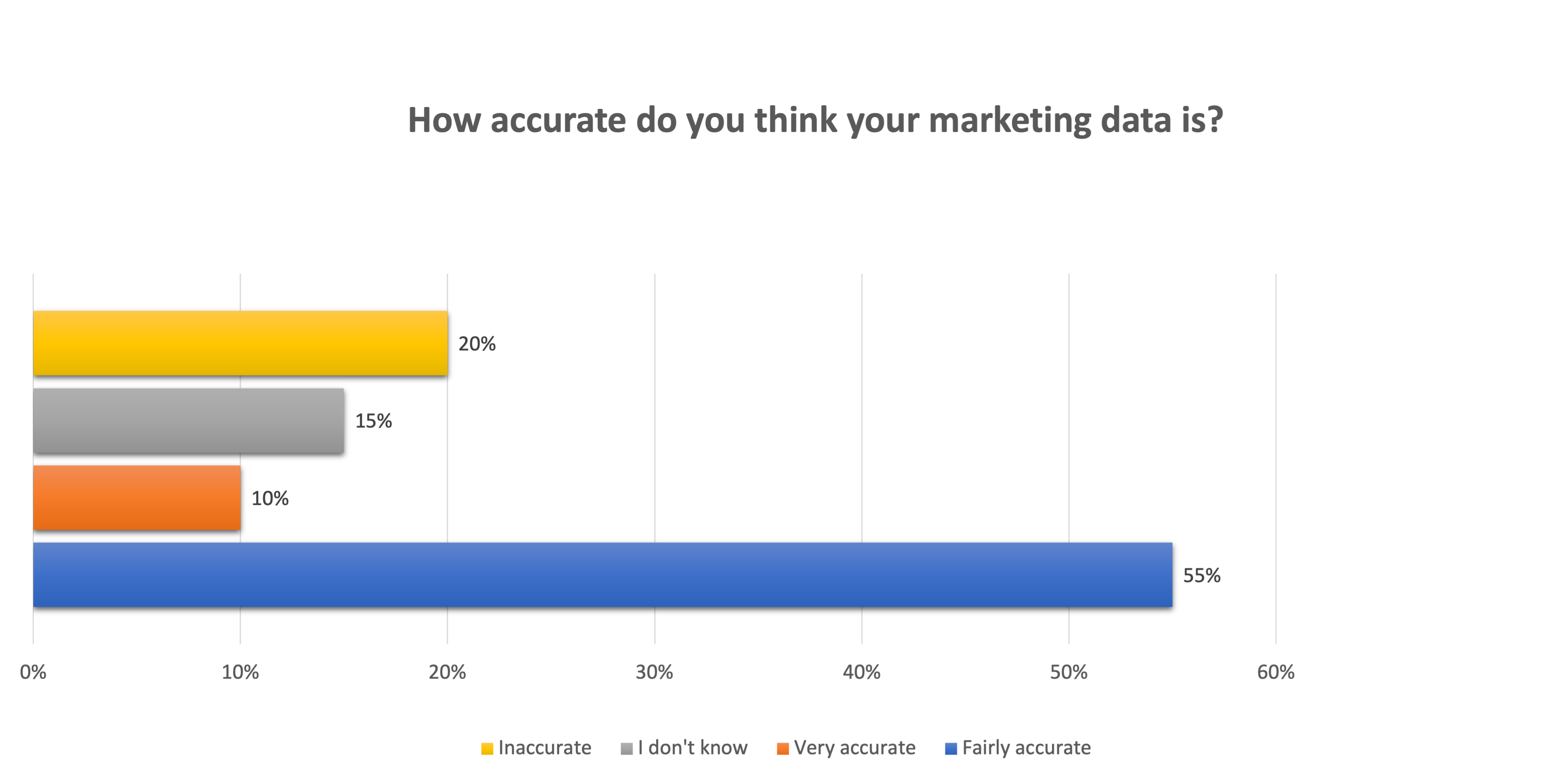
Jason: We’ve all worked with lots of different kinds of schools. I will sit with four schools facing the same problem: a lack of growth. Three of them will focus on the product problem, which often means discounting. Maybe they offer a new program. It’s a very customer-facing problem, right?
It is really only one out of four—maybe one of four—that get into the performance side. Is our process tight? What does our technology stack look like? Are our teams talking? Are we driving to the right metrics?
The inside-out approach is very warranted right now in such a competitive landscape. You know, really honing in cross-functionally on some of those metrics, as you mentioned: cost per lead and cost per start. Building an analytical view of the journey, as Karan says, is probably more important than ever. It’s just interesting to me how many schools revert to what they know as opposed to evolving with the new direction.
Joe: Enrollment can be increased by 5-10% just by running efficiency with your current technology stack, with your metrics, the way you improve your customer service…
I always say when I’m doing any kind of consulting or when I’m having conversations with colleagues, “When is the last time you enrolled in your own institution?” When is the last time you walked through those painful steps?
It needs to be really easy to do from user experience and perspective, and a lot of times, we don’t take the time to do it ourselves at our institution. You can drive efficiency without spending the extra dollars. We all know that the more enrollment and revenue goes down, the harder it will be to ask for resources from anyone, so you have to try to drive efficiency from an inside-out approach.
Process automation = faster responses to prospects
Karan: For us, from a marketing lens, we had to figure out how do we reach our customers, and how do we build a competitive advantage in this highly crowded market for online certs and degrees?
We were sort of behind the curve in our speed to lead and what we were able to do overtime is use automation that allowed us to integrate our paid marketing platforms and have those leads go through our CRM and directly rerouted to each of our admissions counselors pretty much in real-time. So, we were able to outreach those leads where we previously took about 24 hours down to about 10 minutes.
I think that initial touchpoint really drives behavior when you have someone on the phone who is able to walk you through your needs, and being the first to reach them has been a pretty big game-changer for us.
Claire: As leaders, we need to continually assess market trends and best practices—and not just in higher education. I was recently in the housing market and looking for a mortgage, so I went to RocketMortgage.com.
I went to their website and submitted the contact form for their website, and within seconds—not minutes—I received a phone call from an agent in their call center, a text message welcoming me and giving me some materials, and an email giving me some next steps. These contacts continued: phone calls, text messages, and emails, for several days and weeks afterward.
Phone agents were even leaving voicemail messages on my cell phone saying, “Hey, I was just thinking about you and wanted to make sure you have what you need in the process. Let me know if I can help answer your questions.”
It is really an example of a company that has figured out that consumers want easy. Right? Their tagline is “Push button. Get mortgage.” They’ve taken this very lengthy, cumbersome, expensive process of getting a mortgage, and simplified it. They’ve made it easy.
Higher education is also a very lengthy, cumbersome, expensive process, but today, consumers expect ease in that interaction because of other industries who have figured this out and are doing things like that.
So, customers want to feel valued in the process. They want to feel like you have steps for them to take. I would say it’s more important now than ever that we create experiences that provide students with ease of access and communication.
I think it’s surprising how many colleges have a phone number listed at the top of their website, and when you call that phone number, no one answers. We need to be persistently focused on the consumer experience and making it better and more accessible for students.
Joe: It is so important that you understand what other industries are doing. Let’s just say it like this: How long does it take?
There’s your process improvement question. There are your automation questions:
How long does it take for a student to be enrolled? How long does it take to get them a package for financial aid? How long does it take for your enrollment advisor, counselor, admissions person, to respond to a student that submits an inquiry through the website? How long does it take for that interaction to take place?
Then, build automation around it. If you want to be very active in your recruitment, you have to have automation, you have to ask yourself how long something takes because other companies ask that question.
For example, if you go online to this very large online retailer and order a package, how long does it take for you to receive that package that you paid for? Does it take that same amount of time for higher ed? If the answer is no, then that student is going to find somewhere else where they can get the answer to be yes.
But there are a number of systems out there that can help you be faster. There are companies like LeadSquared; the robust nature of the technology is going to give you more knowledge.
But you have to know what you are looking at. You need to understand, as I talked about… Response times… What is the length of time it takes to convert students to enrollment? What students are we talking about?
All of those dictate what kind of automation you are going to put in place. But when I talk about automation, the first thing I think about is human automation. It’s about relationship-building and doing things in the right way and then complementing that with the right piece of technology to increase your speed.
What’s your formula for determining acquisition costs?
One of the webinar’s attendees asked this question and got these answers:
Claire: I think it varies by school and what’s important for you to measure. Some people take their total marketing investment costs for any given academic year and divide that by the number of students that you enrolled within that same academic year. I think that is probably one of the most common calculations.
But I think it’s also important to look at a more holistic view that incorporates enrollment and marketing overhead expenses, so when you consider the amount that you are spending on technology, infrastructure, and staffing, look at your “all in” expenses in an academic year and divide that by the number of enrollments that you receive.
It varies broadly. I have seen some in for-profit environments where the cost per enrollment is as low as a thousand dollars per student. Then I have seen on the high-end, where it is $10,000 per student. Obviously, it ranges based on the institution, based on the amount you are spending on marketing and acquisition costs. That is a basic formula for how to measure it.
Joe: If you’re really good, you can measure your acquisition costs by channel. You would have an idea of what channel produces the best acquisition costs, and you can start to flex that spend based on efficiency. That is where automation can help, especially if you can input numbers into a system on the front end and spit out an acquisition cost on the back end.
Claire: A little hack for buying processes: you can take that into a pivot table, filter it by the column that indicates cost per enrollment, highest to lowest providers, and that’s where you see the kinds of campaigns that need to scale and the kinds of campaigns where maybe you don’t need to scale or invest in that anymore. You can free that money up and spend it elsewhere.
Some thoughts on content marketing, cultivation, and lead capture
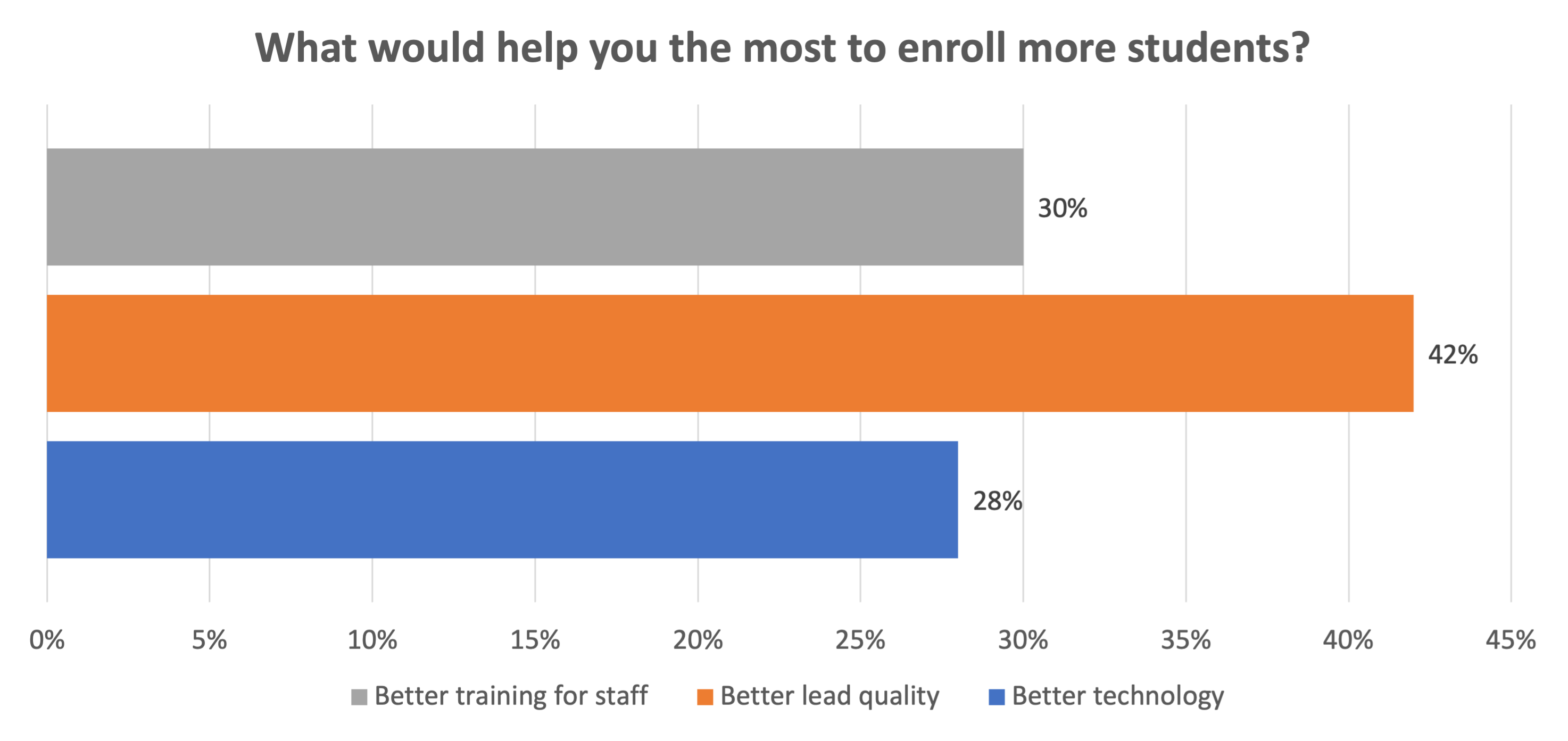
Jason (to Karan): Talk to us a little bit about your model. I think it’s unconventional and definitely a source of innovation. You are bringing students in from different channels and guiding them through a very robust journey. You guys have free content, full degree programs, things in between. I hate to use a term like “upsell,” but do you primarily see folks come in for free content? How does that work in your world?
Karan: We live and breathe on digital marketing channels. Our largest source of traffic for the site is our blog. And of course, we have a free course channel that probably is our second highest, then it is paid and organic “direct-to-site” traffic.
Even after all of the brand-building we have tried to push for, what this says about the consumer and the consumer journey is you need to start adding value to them as early as possible. So, if you are not putting out content that is relevant to them without asking for something in return, they aren’t going to trust you when it is time to ask for something in return.
And guess what? It’s much cheaper, by the way, to do that than to drop thousands of dollars on any of these channels, but it’s harder work. It’s really easy to set up these digital campaigns, but the rewards are proportional. It’s just like any business, right? The harder it is to get in, the more likely you are to succeed. As long as there is a real product market fit, the more likely you are to have less competition, so on and so forth.
But people don’t always take to that channel (blogging) because it is easier to pull the lighter lever. But I would argue that is a more valuable lever because it has a long-term effect in the market. They have long runways of payout.
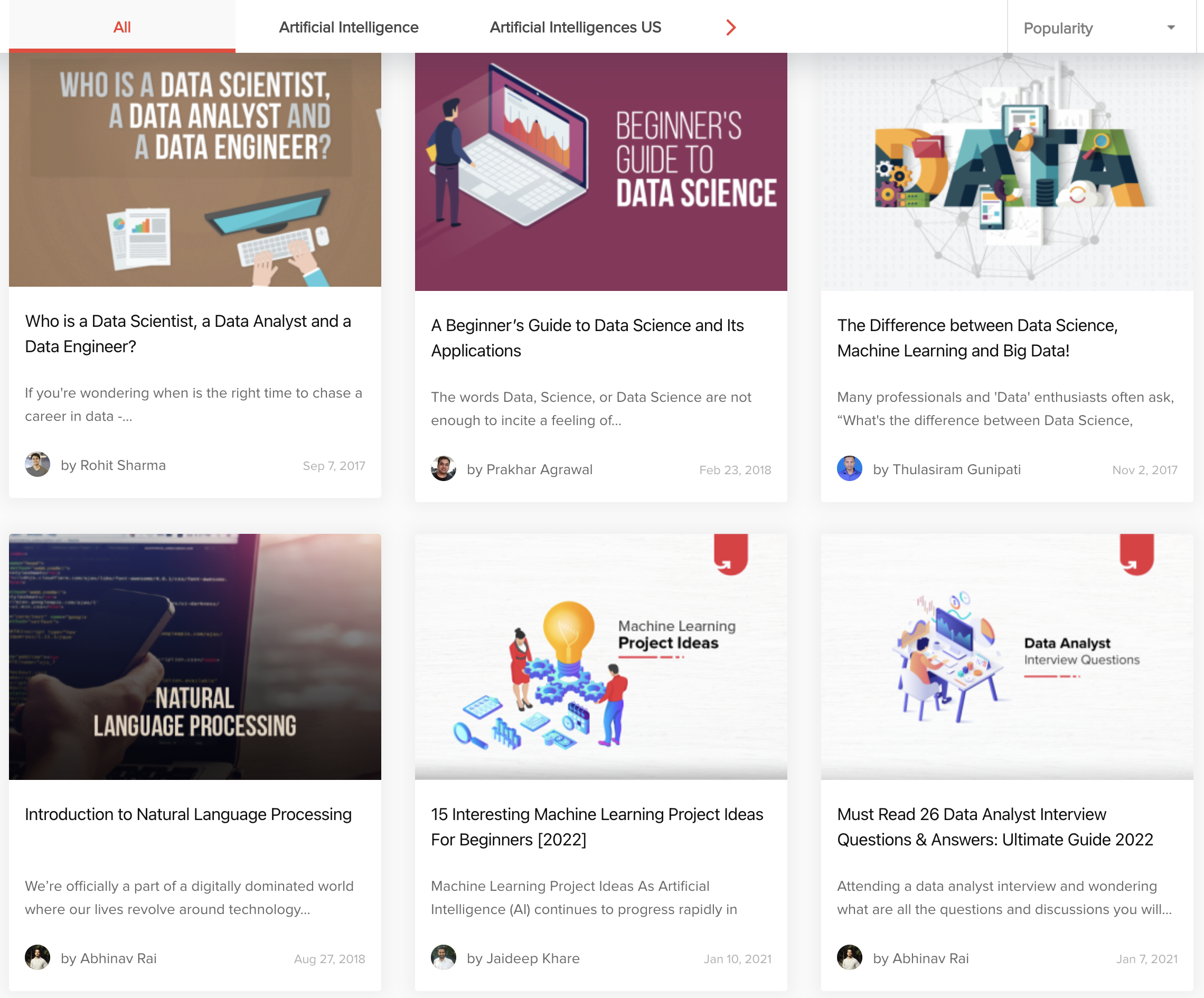
We have an article that is called Four Types of Data. The article drives thousands of site visitors every month. Out of that, even though it’s a small conversion rate, it still beats most other channels that we have, for lead generation. And what is the cost to maintain that article? Nothing. It is just sitting there and producing traffic and leads for us.
So, search engine optimization, organic content development drive higher quality leads. When they finally do convert, they tend to be of much higher quality, and they convert at better rates into enrollment. It is all because upGrad, at some point in their exploratory journey, added value without us asking for anything in return.
Joe: I’m always planning out how many leads, how many students, how many do I need now? How many do I need later? How do I flex my spend for the students I need now versus the ones I need later? That is the difference in “capture” versus “cultivate.”
I can cultivate leads for next year through email campaigns, through drips, through texts. I can get somebody who is interested to remain interested for a while. I need to make sure there is a defined pathway.
I mean, you know what, there are big online players out there that just come in and swipe the students right out. How do they do it? Tons of messaging. That is the “capture” part. You can capture a student at any point that they are interested, and then you also have to cultivate them for later. That is part of the strategic plan.
Claire: I have seen the importance of just consistent, continuous messaging that is really streamlined throughout the communication funnel.
So, just to give you an example, let’s talk about paperwork and eliminating paperwork. I know many colleges still have a paper application, like 10-12 pages that you need to fill out and mail in.
Most also have an online application on your website. At Regent, we have had an online application for a number of years. It is just two pages. As we were building this, we noticed that there are some questions on here that really aren’t necessary for the admissions process. You know, we don’t need to know this in order to admit them into a program. So maybe we simplify this a little bit. Maybe we eliminate some of those questions.
We did that. We instantaneously saw a 24% increase in applications submitted, and with that, a 12% increase in applications that were admitted to the university.
So, we are not just talking about volume for the sake of volume. These were highly qualified applicants that were admitted. So, all that is to say it’s critically important that you audit your communication funnel.
Look at every touchpoint. Look at your lead forms. Look at your application. Look at your landing pages. Ask yourself, “Am I answering the right questions for my customers, for prospective students, and is this making it easy and convincing for these students to take the next steps?”
Which analytics help drive your business forward?
Claire: There are a number of dashboards that are really important. I’m very grateful that we have an amazing data science team and real-time dashboards that allow us to monitor lead flow and cost per acquisition and volume of applications, the volume of admits, registration, everything down the funnel.
I have found there can be sticking points and certain bottlenecks between certain phases of the funnel. Financial aid is one of them. It’s always a big hurdle, a ton of red tape, a lot of federal requirements, so that requires a lot of handholding and intensive time spent with the students.
But if you break it down in your dashboards, in the things that you are watching every day, to look at volume of leads, volume of applications, volume of accepted applications, volume of financial aid process, then, volume of registrations.
Break it down in each area and give yourself the benefit of awareness when it comes to where you stand in comparison to your goal line, and continue to monitor those little places where there are anomalies and some areas to improve at specific points in the funnel.
Karan: We are all digital at this point, so maybe we have some nuances there. We take it one step higher than leads and look at traffic. Where are folks really finding us? Looking at that, making sure that there is a general trend upwards.
Then, breaking it down in the funnel: applications, shortlists, are people failing entrance exams for some of our programs? The data isn’t there just for us to track progress, but it is also there for us to diagnose issues.
Closing thoughts

Claire: Know your value proposition as an institution, and communicate that regularly to your customers. It’s really important to identify and consistently remind your prospective students why your college is better than any other college down the street or across the country.
So, continue to remind students of your value proposition. Continue to secret shop your own process and apply for your own programs. Find little areas that might be a sticking point or a point of frustration in the consumer journey. Work to smooth those things out and make it a better customer experience.





